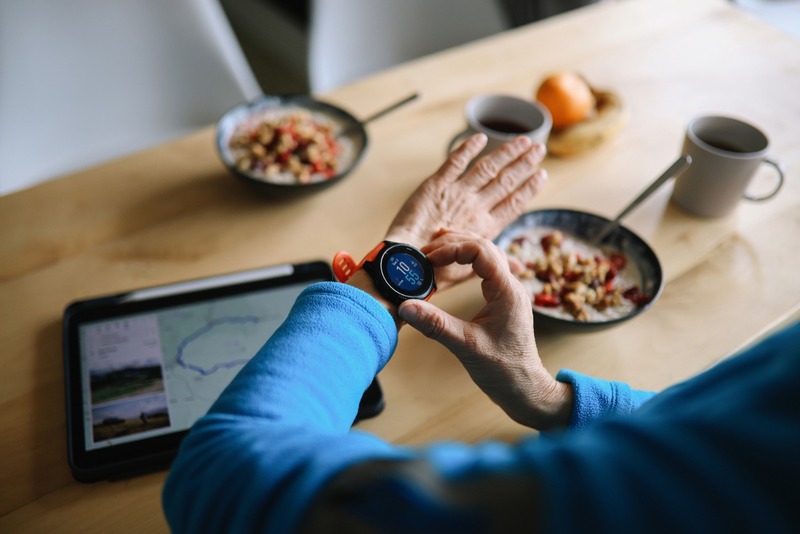News
Dr. Tom Hackett Just What U.S. Snowboarding's Olympic Team Ordered
It was only 11 days after shoulder surgery when snowboarder Nate Holland raced in the Lake Louise snowboardcross World Cup competition where he placed seventh. Two weeks later in Spain he placed fourth. Just six weeks after the surgery the two-time Olympian was a Winter X Games gold medalist.
"To come here and do this to win at X Games is huge for my confidence and for riding. I'm looking forward to throwing one down the barrel in Sochi and beating the world" said Holland who was fourth at the Vancouver Olympics in 2010. "I'm going in guns blazing."
Holland's rapid recovery to top-tier racing is both a testament to his strength and conditioning as well as to the talent of his surgeon Dr. Tom Hackett.
Hackett an orthopedic surgeon at Vail's renowned Steadman Clinic is the chief physician for U.S. Snowboarding's Olympic team. He estimates that he has worked with 22 athletes who will be competing at the Sochi Olympics which start this week.
The former ski patroller knows athletes such as Holland and alpine ski racer Lindsey Vonn will push harder than ever to rebound from injuries and surgeries as the Olympics loom.
"During an Olympic year the stakes are high for everybody and that includes us as well" Hackett said. "Everyone talks about that word 'progression.' Progression doesn't just involve the athletes but everyone who takes care of those athletes. My surgical skills have had to progress to keep up with these guys and get them back faster. It's been a challenge to take care of some of these guys who want to get back to what is essentially an extreme sport. So in the operating room I take an aggressive approach to fixing some of the problems that these guys get with their bones and tendons and ligaments.
"I try to go as hard as they do in the operating room to get them back. That means being more aggressive surgically. Myself and my partners here in Vail have really pushed the envelope in our surgical techniques."
Hackett recently set up cameras in the halfpipe and stickered top snowboarders and skiers with reflectors to conduct a motion analysis of their runs. His study shows increasing stress on joints and ligaments as the athletes try bigger and more complicated tricks. The study has helped Hackett devise strategies aimed at strengthening certain muscles to prevent injuries. He calls it "fine tuning their training."
That's just another part of Hackett's service to the world's top winter athletes. He left last week for Sochi helping safeguard and prepare athletes for competition in what essentially is several weeks of unpaid vacation.
"I lose a lot of money on these deals" said the chief physician for the U.S. Ski Team in the 2010 Vancouver Olympics. "But I love it. It really is an honor. It's almost a national service the way I look at it. I'm not in the Army or Navy and I haven't served in Afghanistan but this is a way I can provide a service to my country."
More News
-
New!
More

First Chair to Last Call: What Does Alcohol Really Mean For Your Health?
In nearly every Colorado ski town, some iteration of the neon sign blares its play-hard-party-harder anthem. It’s a not-so-subtle nod to mountain party culture, a lifestyle that normalizes combining sports and outdoor adventures with heavy drinking and partying. In Eagle County, après culture, high-altitude living and outdoor performance have coexisted for as long as locals have been sliding on snow. But how much is too much at altitude? And what role do social support systems play in helping residents find balance?
-
New!
More

Counting More Than Steps: How Wearables Can Help (or Hinder) Your Health
From step counts to sleep stages, heart rate variability to blood sugar spikes, wearable devices are giving us a front-row seat to what’s happening inside our bodies. Strapped to wrists, slipped onto fingers or wrapped around our biceps, wearables like the Oura Ring or Whoop strap promise insight and advice in the quest for better health.
-
More

Cass Barham and Sarah Crabtree Honored As Recipients of Vail Health Elevate Award
Cass Barham and Sarah Crabtree, both lab techs at Vail Health Hospital, have been named recipients of the Vail Health Elevate Award. Vail Health created the Elevate Award in June 2022 to give patients and their families an opportunity to nominate and thank employees who have touched their lives in some way.
